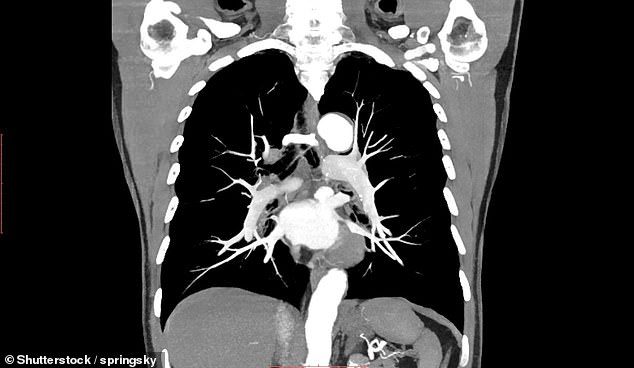
Machine learning was used to train LogitBoost, which its developers say can predict death or heart attacks with 90 per cent accuracy.
It was programmed to use 85 variables to calculate the risk to the health of the 950 patients that it was fed scans and data from.
Patients complaining of chest pain were subjected to a host of scans and tests before being treated by traditional methods.
Their data was later used to train the algorithm.
It 'learned' the risks and, during the six-year follow-up, had a 90 per cent success rate at predicting 24 heart attacks and 49 deaths from any cause.
Services like Netflix and Spotify systems all use algorithms in a similar way to adapt to individual users and offer a more personalised look.
Study author Dr Luis Eduardo Juarez-Orozco, of the Turku PET Centre, Finland, said these advances go beyond medicine.
He said: 'These advances are far beyond what has been done in medicine, where we need to be cautious about how we evaluate risk and outcomes.
'We have the data but we are not using it to its full potential yet.'
Doctors use risk scores to make treatment decisions - but these scores are based on just a 'handful' of variables in patients.
Through repetition and adjustment, machines use large amounts of data to identify complex patterns not evident to humans.
Dr Juarez-Orozco said: 'Humans have a very hard time thinking further than three dimensions or four dimensions.
'The moment we jump into the fifth dimension we're lost.
'Our study shows that very high dimensional patterns are more useful than single dimensional patterns to predict outcomes in individuals and for that we need machine learning.'
The study enrolled 950 patients with chest pain who underwent the centre's usual protocol to look for coronary artery disease.
A coronary computed tomography angiography (CCTA) scan gathered 58 pieces of data on potential risks of a heart attack.
These included the presence of coronary plaque, vessel narrowing, and calcification
Those with scans suggestive of disease underwent a positron emission tomography (PET) scan which produced 17 variables on blood flow.
Ten clinical variables were obtained from medical records including sex, age, smoking and diabetes.
The 85 variables were entered into LogitBoost, which analysed them repeatedly until it found the best structure to predict who had a heart attack or died.
Dr Juarez-Orozco said: 'The algorithm progressively learns from the data and after numerous rounds of analyses, it figures out the high dimensional patterns that should be used to efficiently identify patients who have the event - the result is a score of individual risk.
'Doctors already collect a lot of information about patients - for example, those with chest pain.
'We found that machine learning can integrate these data and accurately predict individual risk.
'This should allow us to personalise treatment and ultimately lead to better outcomes for patients.'
The study was presented at The International Conference on Nuclear Cardiology and Cardiac CT.



Comment: While this appears to be another useful tool for medical diagnosis, the downside of such technology is that humans may come to rely solely on its prognostications and may fail to notice contradicting information.